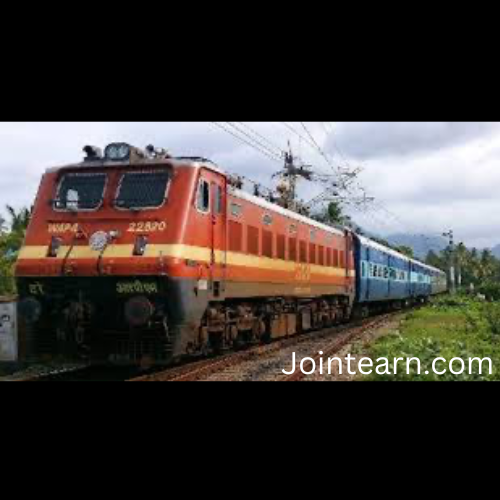ChatGPT said:
The Karnataka government has approved a massive new infrastructure project that promises to reshape Bengaluru’s transport and business landscape—the 117-kilometre Bengaluru Business Corridor. Rebranded from the long-delayed Peripheral Ring Road (PRR) project, the initiative is being touted as a landmark step toward easing the city’s traffic congestion, improving connectivity, and catalyzing economic development across the region. Deputy Chief Minister D.K. Shivakumar announced the project’s approval following a Cabinet meeting on Thursday, describing it as a “historic step” for the city’s future and a long-overdue breakthrough for an idea that had languished for nearly two decades.
The Bengaluru Business Corridor will serve as a strategic ring road connecting key entry and exit points of the city—linking Tumakuru Road to Mysuru Road via Yelahanka and Electronic City. Designed to function as an alternative to the NICE Road, the new corridor aims to divert heavy traffic, logistics vehicles, and intercity commuters away from the city center. This, officials say, will help reduce congestion by as much as 40 percent while enabling faster connectivity between Bengaluru’s northern and southern economic zones. “The erstwhile Peripheral Ring Road project has been renamed the Bengaluru Business Corridor and approved. The government is rewriting history with such a major infrastructure initiative,” Shivakumar declared after the meeting, adding that the project embodies the government’s renewed political will to address Bengaluru’s worsening traffic and infrastructural challenges.
The scale and ambition of the Bengaluru Business Corridor underscore its significance. Of the total 117 kilometres, about 73 kilometres will pass through North Bengaluru—covering Yelahanka, Devanahalli, and other emerging industrial and residential zones—while the remaining stretch will traverse South Bengaluru, connecting Electronic City, Hosur Road, and Mysuru Road. The total estimated cost stands at Rs 27,000 crore, which the state plans to finance through a loan from the Housing and Urban Development Corporation Limited (HUDCO). Shivakumar said that the previous administrations had failed to advance the project despite several notifications and feasibility studies, citing bureaucratic delays and the absence of sustained political commitment. “Bengaluru needs an alternative to NICE Road. We have now decided to proceed with a HUDCO loan of Rs 27,000 crore,” he said.
The corridor’s design has been modernized to meet contemporary standards. According to the new plan, the road will be 65 meters wide—comparable to the recently upgraded Bengaluru–Mysuru expressway—and will feature a dedicated five-meter provision for a future metro line. This integration of road and rail infrastructure aims to ensure long-term transport flexibility as the city expands. Shivakumar also explained that 35 meters of the total acquired land will be returned to farmers as part of a new, more inclusive compensation framework. This approach, he said, will reduce resistance to land acquisition, one of the major hurdles that had previously stalled the PRR project for years.
Under the revised compensation model, landowners will be offered four flexible options. They can choose either double the prevailing market value for their land or opt for 40 percent of developed land in layouts created by the Bengaluru Development Authority (BDA). Those unwilling to part with their property will have their compensation deposited in court to prevent the project from stalling. Shivakumar emphasized that “no land will be de-notified” under any circumstance, reflecting the government’s determination to ensure steady progress once construction begins. He also said that if a significant number of landowners select land-based compensation, the project’s effective cost could drop below Rs 10,000 crore.
The Deputy Chief Minister positioned the Bengaluru Business Corridor as a crucial intervention to address Bengaluru’s urban mobility crisis, which has reached critical levels. Once completed, the project is expected to cut vehicular pressure within the city by diverting long-distance and freight traffic to the outer zones. The corridor is designed to operate as a high-speed, signal-free expressway, reducing travel times between industrial, residential, and IT clusters. It will also link major highways, enabling seamless regional connectivity to cities like Tumakuru, Mysuru, and Hosur. Urban planners have hailed the project as a necessary move to counterbalance Bengaluru’s unsustainable population density and road congestion, which have intensified due to rapid growth in the technology and manufacturing sectors.
Although toll collection will be part of the corridor’s operation, Shivakumar declined to reveal specific rates, noting only that “no road can operate without tolls.” The government, however, maintains that toll pricing will be designed to remain affordable for commuters while ensuring long-term maintenance and viability. The project is expected to be completed within two years, a timeline that Shivakumar called “ambitious but achievable.” To ensure accountability and speed, he has assigned senior bureaucrat L.K. Atheeq to supervise implementation and monitor progress closely. “This project was gathering dust for two decades. I’ve given L.K. Atheeq the responsibility to ensure it’s completed quickly,” he said, adding that delays and mismanagement would not be tolerated.
The Deputy Chief Minister also used the opportunity to respond to political criticisms surrounding the government’s recent infrastructure initiatives. When asked about Union Minister H.D. Kumaraswamy’s allegation of a Rs 15,000 crore scam linked to the conversion of B Khata properties to A Khata status, Shivakumar dismissed the charge outright. “Good for him. Let him deploy his investigation team to check,” he remarked, characterizing the claim as politically motivated. He maintained that his administration’s focus remained on governance and tangible development outcomes rather than political sparring.
Beyond the business corridor, Shivakumar also confirmed that the state is undertaking a fresh caste census to replace outdated data collected a decade ago. “It was done 10 years ago; we’re redoing it to ensure justice for all,” he said, reiterating that the state had declared a school holiday for the survey to facilitate participation but would not extend it further. The census is expected to play a critical role in shaping social justice and welfare policies across Karnataka in the coming years.
The approval of the Bengaluru Business Corridor represents a defining moment in the city’s urban development journey. For over twenty years, the Peripheral Ring Road remained a vision trapped in administrative red tape, with successive governments failing to execute it due to land disputes, environmental concerns, and financing obstacles. The new rebranding and funding model appear to signal a genuine commitment to realizing the long-promised infrastructure backbone that Bengaluru needs. Experts believe that if completed as planned, the corridor will not only improve traffic efficiency but also drive the expansion of business hubs, logistics parks, and real estate corridors along its route.
By linking industrial zones, IT clusters, and major highways, the Bengaluru Business Corridor could transform how people and goods move across the metropolitan region. The project aligns with a broader vision of developing satellite townships and business districts around the periphery, thus easing pressure on the city’s core. Its integration with future metro and suburban rail networks also reflects a shift toward multimodal transport planning—a necessity for a city that has grown faster than its infrastructure can sustain.
However, challenges remain. Land acquisition, though addressed more flexibly, could still face local opposition, and managing the project’s financial and environmental dimensions will require careful oversight. Yet, the tone of Shivakumar’s announcement suggests the government is determined to push ahead. After decades of inaction, Bengaluru’s long-awaited outer corridor may finally be on the path from blueprint to reality, promising faster travel, less congestion, and a renewed urban balance for one of India’s fastest-growing cities.


Leave a Reply